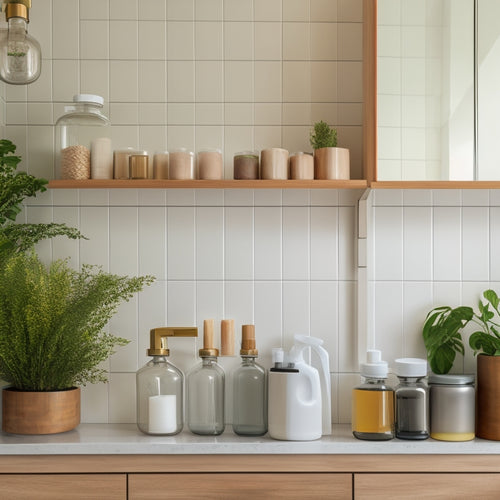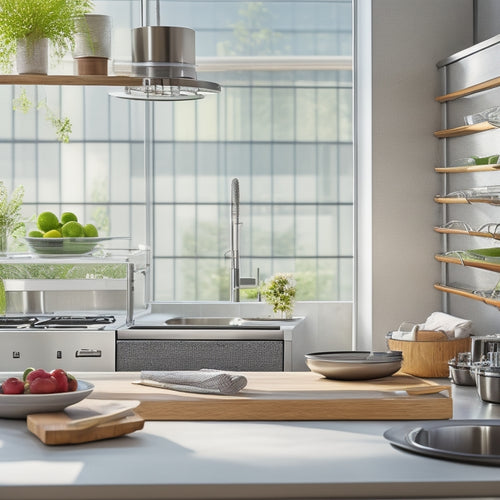
Printing the Perfect Thin-Blade Cookie Cutter
Share
Printing thin-blade cookie cutters demands a delicate balance of design, material, and printing considerations to overcome challenges like fragile edges and inadequate slicing performance. By understanding the limitations of 3D printing technology and optimizing design with one-perimeter thick edges or 5-perimeter width tapering, cutting precision can be enhanced. Material selection, such as PETG, and precise printing settings are also essential. A well-designed and carefully printed cookie cutter ensures safe and effective cutting performance. To reveal the secrets of printing the perfect thin-blade cookie cutter, consider the interplay of these critical factors and discover the nuances that set exceptional cutters apart.
Key Takeaways
• Optimize design with a 1-perimeter thick edge or 5-perimeter width tapering to 1 at a 45-degree angle for enhanced cutting precision.
• Select durable materials like PETG and optimize printing settings for precise thin lines and edges to maintain blade thickness.
• Apply food-safe coatings to prevent dough sticking and ensure safe baking, and prioritize cleanliness and regular upkeep of the cutter.
• Consider vase printing for thin ridges on intricate shapes and design with a pusher plate for smooth dough release in complex shapes.
• Balance cutting performance, structural strength, and ease of use when designing effective cookie cutters to minimize dough waste and ensure safe and effective cutting performance.
Overcoming Thin-Blade Challenges
Printing thin-blade cookie cutters requires careful consideration of design and material limitations to overcome the challenges of fragile edges, inadequate slicing performance, and edge thickness inconsistencies. Troubleshooting thin edges involves understanding the limitations of 3D printing technology and adapting design parameters to compensate for these limitations.
Enhancing cutting precision can be achieved by optimizing the design of the cookie cutter, such as using a one-perimeter thick edge or a 5-perimeter width that tapers to 1 at a 45-degree angle. By carefully designing and printing thin-blade cookie cutters, manufacturers can guarantee safe and effective cutting performance, while also minimizing the risk of edge breakage and other safety hazards.
Designing Effective Cookie Cutters
Enhancing cookie cutter design involves carefully balancing cutting performance, structural strength, and ease of use to create a functional and safe baking tool.
Effective cookie cutter shapes should prioritize cutting efficiency, ensuring clean cuts and minimizing dough waste. A 5-perimeter width tapering to 1 at a 45-degree angle can achieve optimal cutting performance while maintaining structural integrity.
Complex shapes may benefit from a pusher plate design, allowing for smooth dough release. Additionally, coating the print with food-safe material can prevent dough sticking, ensuring a safe and efficient baking experience.
Printing Thin-Blade Success Tips
With the design elements of effective cookie cutters in place, the next challenge lies in bringing these intricate shapes to life through precise 3D printing. The nuances of material selection, printing techniques, and post-processing can make all the difference in achieving a functional thin-blade cookie cutter.
To guarantee success, consider the following key factors:
-
Material selection: Choose a durable material, such as PETG, that can maintain blade thickness and withstand the rigors of cutting through dough.
-
Printing settings: Optimize printing settings to achieve precise thin lines and edges, and consider vase printing for thin ridges.
-
Post-processing techniques: Apply food-safe coatings to prevent dough from sticking to the cutter, and make sure the cutter is clean and free from contaminants.
Maintaining a Food-Grade Printer
Ensuring the integrity of food-grade prints begins with meticulous upkeep of the 3D printing equipment. Even tiny impurities can compromise the safety of the final product. A dedicated printer for food-grade prints is necessary, as lubricants and other materials used in the printer must be carefully chosen to guarantee food safety.
Implementing rigorous cleaning procedures and regular printer upkeep is essential to prevent cross-contamination. This includes sanitizing the print bed, extruder, and other components regularly.
Exploring Food-Grade Printing Resources
What resources are available to guide food-grade printers in maneuvering the complex landscape of 3D printing for culinary applications?
When venturing into food-grade printing, it is essential to have access to reliable resources that provide guidance on choosing materials, best practices, and food-safe coatings and techniques.
-
Reputable online forums and blogs, such as the Prusa Printers blog, offer valuable insights and tutorials on food-grade printing.
-
Online marketplaces and suppliers provide access to food-safe materials and coatings, ensuring that prints meet safety standards.
-
Industry experts and professionals share their knowledge and experiences through webinars, workshops, and conferences, offering hands-on training and networking opportunities.
Frequently Asked Questions
Can I Use a Cookie Cutter With a Rough Edge to Cut Dough?
'Delicate dough demands deliberate découpage. Using a cookie cutter with a rough edge can lead to uneven cuts and dough damage. Instead, employ proper technique with a sharp, smooth edge to guarantee precise cuts, especially with sensitive types of dough.'
How Do I Store and Organize My 3D Printed Cookie Cutters?
When storing and organizing 3D printed cookie cutters, utilize a dry, cool environment and consider compartmentalized containers to prevent scratching and damage, ensuring easy access while maintaining cookie cutter care and safety standards.
Are There Any Food-Grade Filament Options Besides Petg?
While PLA's brittleness raises concerns, alternatives like ASA, ABS, and Nylon offer improved durability, yet food safety remains paramount; for instance, ensuring filament suppliers adhere to food-grade standards and certifications, such as FDA compliance, is essential.
Can I Print Cookie Cutters With Intricate Designs and Patterns?
When creating cookie cutters with detailed designs and intricate patterns, consider using vase printing with PETG material, ensuring precise settings and thick bottom layers to support thin ridges, while maintaining a clean and food-safe printing environment.
Do I Need to Dry My Cookie Cutters After Washing and Rinsing?
'As we savor the sweetness of success, let's not overlook the vital step of drying our cookie cutters. Air drying is necessary to prevent water spots and guarantee proper care, thereby extending their longevity and maintaining their food-grade safety.'
Related Posts
-

Under-Sink Storage Tips for Minimalist Kitchens
To maximize under-sink storage in your minimalist kitchen, start by utilizing vertical space with shelf risers and st...
-

Top-Rated Dish Drainers for Kitchen Use
Top-rated dish drainers enhance your kitchen's efficiency and aesthetics. You'll find compact designs that save preci...
-

Creative Corner Cabinet Space Management
Creative corner cabinet space management turns neglected nooks into stunning storage solutions. You can maximize vert...


